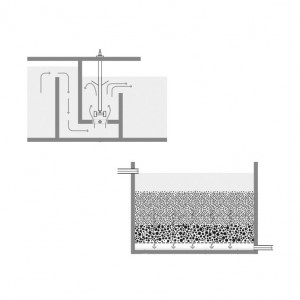المُلخص التنفيذي
Depending on the end-use of the effluent or national standards for discharge in water bodies, a post-treatment step may be required to remove pathogens, residual suspended solids and/or dissolved constituents. Tertiary filtration and disinfection processes are most commonly used to achieve this.
Introduction
Post-treatment is not always necessary and a pragmatic approach is recommended. The effluent quality should match the intended end-use practice or the quality of the receiving water body. The WHO Guidelines for the Safe Use of Wastewater, Excreta and Greywater (see also Volume I, III and IV) provide useful information on the assessment and management of risks associated with microbial hazards and toxic chemicals.
Among a wide range of tertiary and advanced treatment technologies for effluent, the most widespread include tertiary filtration and disinfection processes.
Tertiary Filtration
Filtration processes can be classified as either depth (or packed-bed) filtration or surface filtration processes. Depth filtration involves the removal of residual suspended solids by passing the liquid through a filter bed comprised of a granular filter medium (e.g., sand).
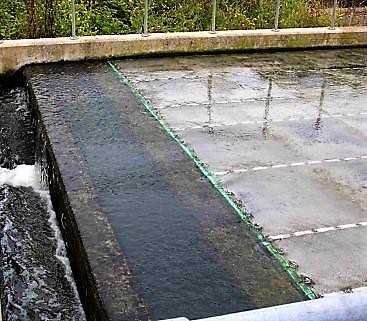
If activated carbon is used as a filter medium, the dominating process is adsorption. Activated carbon adsorbers not only remove a variety of organic and inorganic compounds, they also eliminate taste and odour. Surface filtration involves the removal of particulate material by mechanical sieving as the liquid passes through a thin septum (i.e., filter layer). Membranes are also surface filters. Low pressure membrane filtration processes (including gravity-driven membrane filters) are being developed. Depth filtration is successfully used to remove protozoan cysts and oocysts, while ultrafiltration membranes can also reliably eliminate bacteria and viruses.
Disinfection
The destruction, inactivation, or removal of pathogenic microorganisms can be achieved by chemical, physical, or biological means. Due to its low cost, high availability and easy operation, chlorine has historically been the disinfectant of choice for treating wastewater.
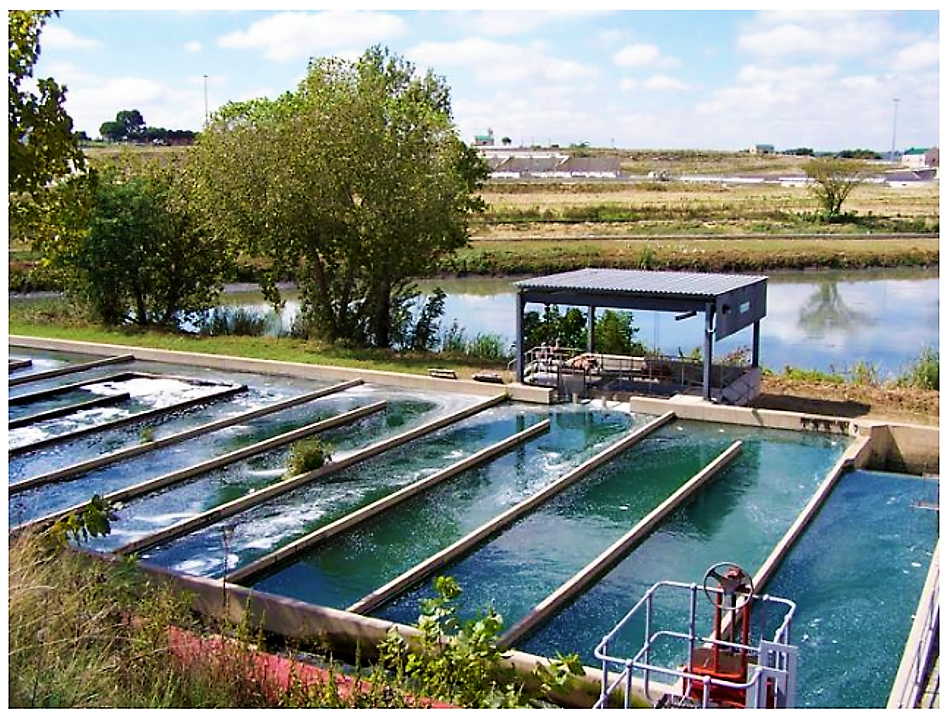
Chlorine oxidizes organic matter, including microorganisms and pathogens (see also drinking water chlorination). Concerns about harmful disinfection by-products (DBP) and chemical safety, however, have increasingly led to chlorination being replaced by alternative disinfection systems, such as (UV) radiation and ozonation (O3). UV radiation is found in sunlight and kills viruses and bacteria (see also drinking water UV disinfection or SODIS).Thus, disinfection naturally takes place in shallow ponds (see also waste stabilisation ponds). UV radiation can also be generated through special lamps, which can be installed in a channel or pipe.
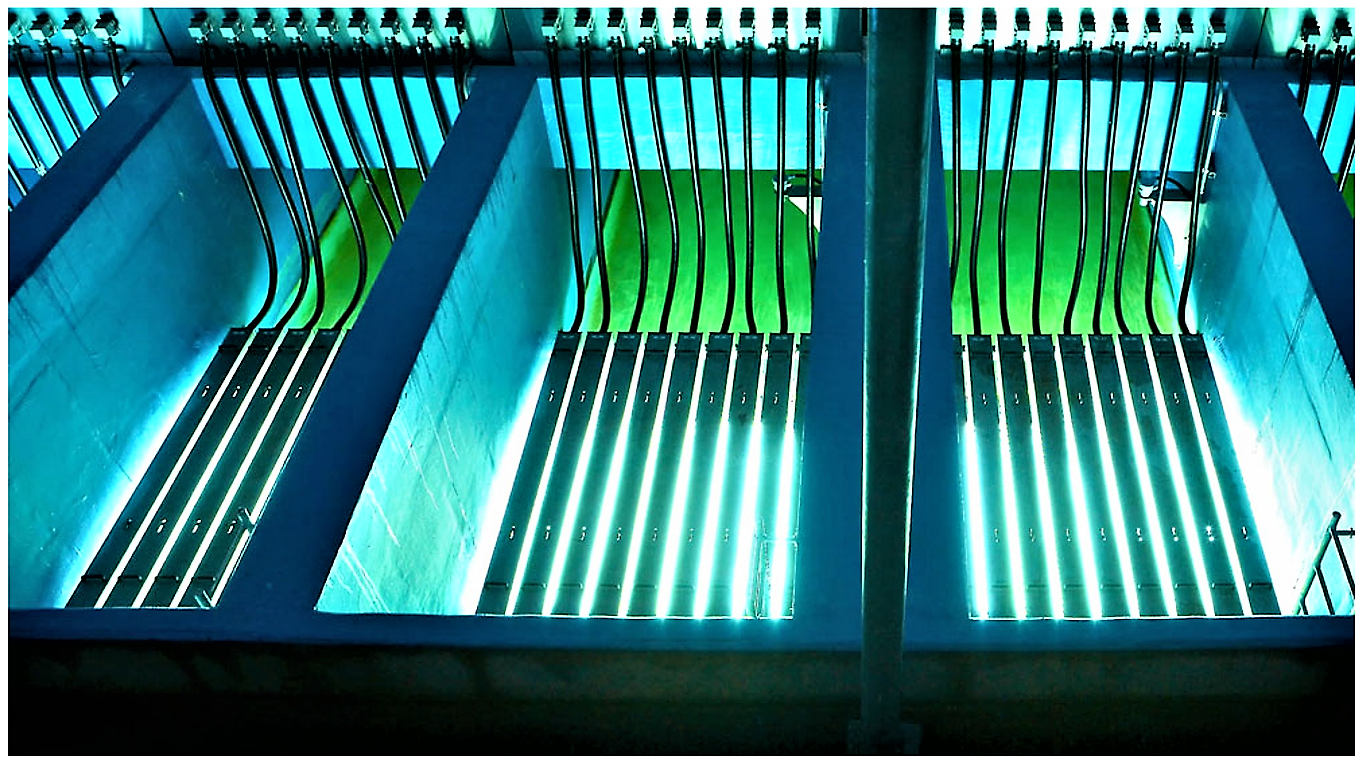
Ozone is a powerful oxidant and is generated from oxygen in an energy-intensive process. It degrades both organic and inorganic pollutants, including odour-producing agents. Similar to chlorine, the formation of unwanted by-products is one of the problems associated with the use of ozone as a disinfectant. Process used for wastewater disinfection are similar to the ones used in the disinfection step of water purification.
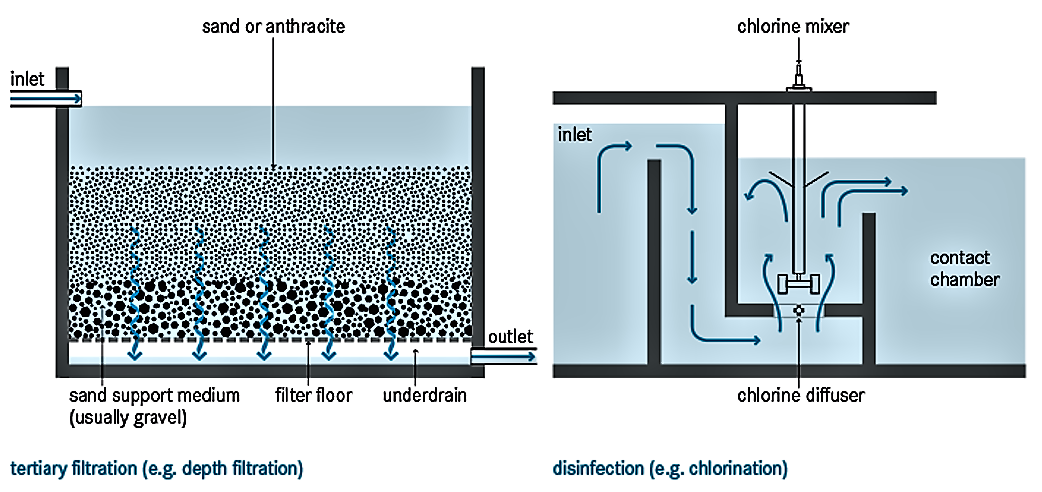
Health Aspects/Acceptance
With both chlorine and ozone disinfection, by-products may form and threaten environmental and human health. There are also safety concerns related to the handling and storage of liquid chlorine. Activated carbon adsorption and ozonation can remove unpleasant colours and odours, increasing the acceptance of reusing reclaimed water.
Operation & Maintenance
All post-treatment methods require continuous monitoring (influent and effluent quality, head loss of filters, dosage of disinfectants, etc.) to ensure a high performance.
Due to the accumulation of solids and microbial growth, the effectiveness of sand, membrane and activated carbon filters decreases over time. Frequent cleaning (backwashing) or replacement of the filter material is, therefore, required. For chlorination, trained personnel are required to determine the right dosage of chlorine and ensure proper mixing. Ozone must be generated onsite because it is chemically unstable and rapidly decomposes to oxygen. In UV disinfection, the UV lamp needs regular cleaning and annual replacement.
The decision to install a post-treatment technology depends mainly on the quality requirement for the desired end-use of the effluent and/or national standards. Other factors are the effluent characteristics, budget, availability of materials, and O&M capacity.
Pathogens tend to be masked by suspended solids in unfiltered secondary effluent. Therefore, a filtration step prior to disinfection brings about much better results with fewer chemicals.
Membrane filters are costly and require expert know-how for O&M, especially, to avoid damaging the membrane. In activated carbon adsorption the filter material is contaminated after usage and needs proper treatment/disposal. Chlorine should not be used if the water contains significant amounts of organic matter, as disinfection by-products can form. Ozonation costs are generally higher compared to other disinfection methods.
Tertiary Filtration
UV disinfection tank
Ultraviolet Disinfection. Guidelines for Drinking Water and Water Reuse
This document describes in detail dose, design, operation & maintenance, field commissioning and monitoring of UV disinfection for drinking water and reuse water.
NWRI (2012): Ultraviolet Disinfection. Guidelines for Drinking Water and Water Reuse. Fountain Valley (US): National Water Research Institute (NWRI) and Water Research Foundation (WRF) URL [Accessed: 20.03.2014]How to Design Wastewater Systems for Local Conditions in Developing Countries
This manual provides guidance in the design of wastewater systems in developing country settings. It promotes a context-specific approach to technology selection by guiding the user to select the most suitable technologies for their area. It provides tools and field guides for source characterization and site evaluation, as well as technology identification and selection. This manual is primarily addressed to private and public sector service providers, regulators and engineers/development specialists in charge of implementing wastewater systems.
ROBBINS, D.M. LIGON, G.C. (2014): How to Design Wastewater Systems for Local Conditions in Developing Countries. London: International Water Association (IWA) URL [Accessed: 20.01.2015]Chlorine Contact Tank
Wastewater Engineering, Treatment and Reuse
Compendium of Sanitation Systems and Technologies. 2nd Revised Edition
This compendium gives a systematic overview on different sanitation systems and technologies and describes a wide range of available low-cost sanitation technologies.
TILLEY, E., ULRICH L., LÜTHI, C., REYMOND P. and ZURBRÜGG C. (2014): Compendium of Sanitation Systems and Technologies. 2nd Revised Edition. Duebendorf, Switzerland: Swiss Federal Institute of Aquatic Science and Technology (Eawag) URL [Accessed: 03.05.2023] PDFGuidelines for the safe use of wastewater excreta and greywater. Volume II. Wastewater Use in Agriculture
Volume II of the Guidelines for the safe use of wastewater, excreta and greywater provides information on the assessment and management of risks associated with microbial hazards and toxic chemicals. It explains requirements to promote the safe use of wastewater in agriculture, including minimum procedures and specific health-based targets, and how those requirements are intended to be used. It also describes the approaches used in deriving the guidelines, including health-based targets, and includes a substantive revision of approaches to ensuring microbial safety.
WHO (2006): Guidelines for the safe use of wastewater excreta and greywater. Volume II. Wastewater Use in Agriculture. Geneva: World Health Organisation URL [Accessed: 05.06.2019] PDFSSWM Toolbox: Water Purification
Compendium of Sanitation Systems and Technologies (Arabic)
This is the Arabic version of the Compendium of Sanitation Systems and Technologies. The Compendium gives a systematic overview on different sanitation systems and technologies and describes a wide range of available low-cost sanitation technologies.
TILLEY, E. ULRICH, L. LUETHI, C. REYMOND, P. SCHERTENLEIB, R. ZURBRUEGG, C. (2014): Compendium of Sanitation Systems and Technologies (Arabic). 2nd Revised Edition. Duebendorf, Switzerland: Swiss Federal Institute of Aquatic Science and Technology (Eawag) PDFProject: Gravity-Driven Membrane (GDM) Technology
Wastewater Technology Fact Sheet Ozone Disinfection
Water Treatment System (Active Carbon Filter)
Ultraviolet Disinfection. Guidelines for Drinking Water and Water Reuse
This document describes in detail dose, design, operation & maintenance, field commissioning and monitoring of UV disinfection for drinking water and reuse water.
NWRI (2012): Ultraviolet Disinfection. Guidelines for Drinking Water and Water Reuse. Fountain Valley (US): National Water Research Institute (NWRI) and Water Research Foundation (WRF) URL [Accessed: 20.03.2014]How to Design Wastewater Systems for Local Conditions in Developing Countries
This manual provides guidance in the design of wastewater systems in developing country settings. It promotes a context-specific approach to technology selection by guiding the user to select the most suitable technologies for their area. It provides tools and field guides for source characterization and site evaluation, as well as technology identification and selection. This manual is primarily addressed to private and public sector service providers, regulators and engineers/development specialists in charge of implementing wastewater systems.
ROBBINS, D.M. LIGON, G.C. (2014): How to Design Wastewater Systems for Local Conditions in Developing Countries. London: International Water Association (IWA) URL [Accessed: 20.01.2015]Advanced Treatment by Ozonation and Sonolysis for Domestic Wastewater Reuse
This publication describes the combination of ozone and ultrasounds for the disinfection and discoloration of domestic wastewater treatment plant effluents for reuse purposes.
SELCUK, H. ; NADDEO, V. ; BELGIONO, V. (2007): Advanced Treatment by Ozonation and Sonolysis for Domestic Wastewater Reuse. المُدخلات: Proceedings of the 10th International Conference on Environmental Science and Technology: URL [Accessed: 21.05.2019]Wastewater Technology Factsheet: Disinfection for Small Systems
This document compares two types of disinfection technologies, chlorination and UV radiation. Comparison of the technologies is based on their applicability, design considerations, performance, operation & maintenance and costs.
U.S. EPA (2003): Wastewater Technology Factsheet: Disinfection for Small Systems. Washington: Environmental Protection Agency (EPA) URL [Accessed: 20.03.2014]Guidelines for the safe use of wastewater excreta and greywater. Volume II. Wastewater Use in Agriculture
Volume II of the Guidelines for the safe use of wastewater, excreta and greywater provides information on the assessment and management of risks associated with microbial hazards and toxic chemicals. It explains requirements to promote the safe use of wastewater in agriculture, including minimum procedures and specific health-based targets, and how those requirements are intended to be used. It also describes the approaches used in deriving the guidelines, including health-based targets, and includes a substantive revision of approaches to ensuring microbial safety.
WHO (2006): Guidelines for the safe use of wastewater excreta and greywater. Volume II. Wastewater Use in Agriculture. Geneva: World Health Organisation URL [Accessed: 05.06.2019] PDFGuidelines for Water Reuse
This document introduces us to the objectives and guidelines of water reuse. In describes all possible reuse application of water, technical issues in planning water reuse systems, legal and institutional issues, funding of water reuse systems, public involvement programs, guidelines in the U.S. and other countries.
U.S. EPA (2004): Guidelines for Water Reuse. Washington, DC: Environmental Protection Agency (EPA)http://water.epa.gov/
This is the weblink to the Technology Factsheets provided by U.S. Environmental Protection Agency.
https://www.watereuse.org/
This is a website for Water Reuse Organisations. They have a large data base of information and resources regarding water reuse and desalination.
http://www.youtube.com/
This video explains in detail how the chlorine is used as an element to purify water, making it fit for human consumption. It explains why this purified water is effective in preventing water borne diseases.

